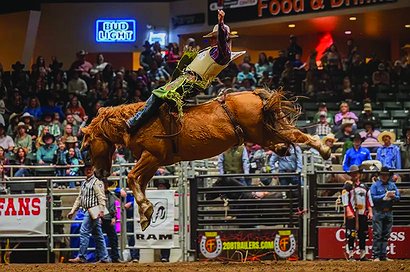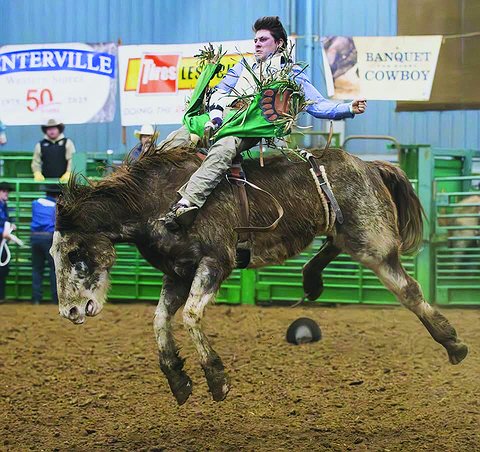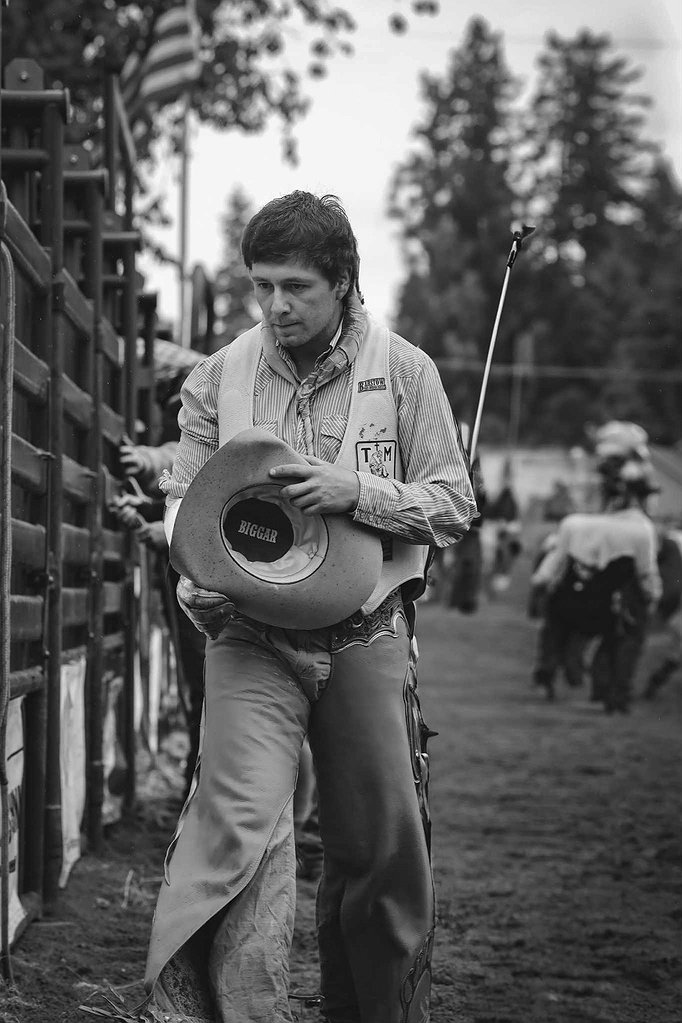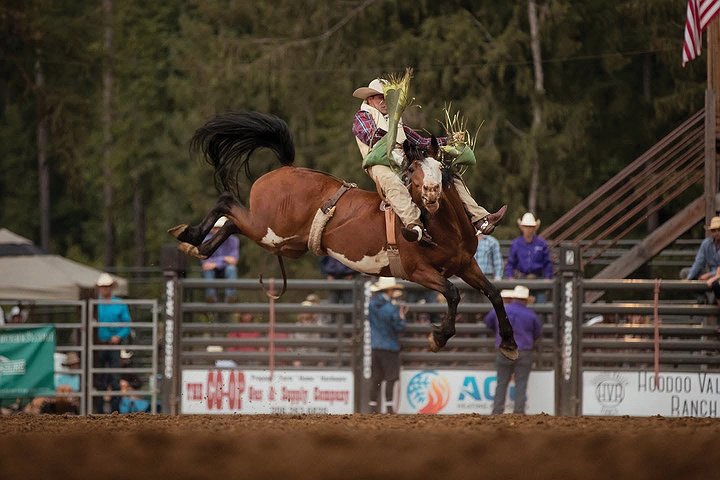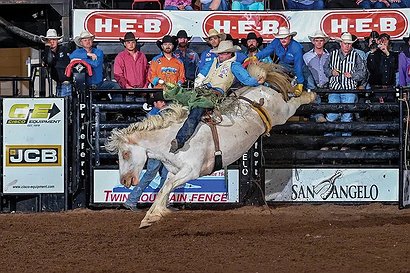Dedicated to the art of bareback riding
MOSES LAKE – The rodeo has been a popular attraction since the late 1800s. Popular at county fairs, families and friends gather for a fun night of entertainment. For Mason Payne, he’s followed the rodeo since he was 14 years old.
“I grew up around it, it was always around me. My Grandpa Red used to own a stock contracting business called CNC Rodeo, and he had a lot of open rodeos,” Payne said. “I used to jump in with him, and he’d take me all over the place, and we’d be gone for the weekend, and I got to watch all those guys get on bulls and get on bucking horses.”
He started out riding bulls, his grandpa showed him the ropes, and Payne took to it quickly. According to Payne, a lot of his time was spent at rodeos and practicing bull riding on their ranch.
Payne grew up in Wellpinit near the Spokane Indian Reservation and graduated from Reardan High School. From there, he went to school at Ranger College in Ranger, Texas and joined their rodeo team before moving back to Washington after graduating.
In high school, he had a friend who wasn’t allowed to try bull riding but was going to try bareback riding and Payne was invited to join him. They went to a rodeo clinic in Coulee City and, according to Payne, the rest is history.
“I thought, ‘Man I’ll just go with them, just to see what it’s like.’ I turned out to be pretty decent at it. So, I put down the bull rope and picked up the bareback rig and took off with that,” he said.
Bareback riding is like bull riding but on a horse without a saddle. The rider has to maintain balance and coordination using their body weight. However, Payne has a unique way of describing the differences between the two styles of riding.
“Bull riding is more of like a dance, and the bareback riding, I would consider it more of like a fist fight, just because you lean so far back and you feel all that horse’s power,” he said.
Payne, now 25, has competed in the rodeo for 11 years, and has seen success. Throughout a given year, riders are tracked within organizations like the Northwest Professional Rodeo Association by the money they win in competitions. As of June 2025, Payne has earned about $350 just in the NPRA; he also competes in other professional rodeo organizations.
To score well in bareback riding, Payne said how long he can hold on and how in control of the horse you appear. Eight seconds is the goal time most riders shoot for. Though, it’s not about the money for Payne, the challenge bareback riding presents is what still draws him to competing.
Competing in the rodeo can take a toll on a rider’s body. Being whipped around on an animal that averages over 1,000 pounds and eventually thrown off adds up over time. Payne said a lot of riders who pursue it professionally make investments in their bodies and overall health.
He said he spends a lot of time trying to eat healthily and going to the gym in order to increase longevity.
“It does wear down your body after a while. I’ve been doing it for a long time, since I was a kid. I broke lots of bones, but I think a lot of it is the more you invest in yourself, the longer your career is going to be,” Payne said.
Despite the risks that come with riding, Payne remains dedicated to the sport in part due to the community found at the rodeo.
“It’s like its own little family; there’s people everywhere all the time that are willing to help you and willing to support you or do whatever you need. It’s a good group to be a part of and I’m super thankful for it,” Payne said.








